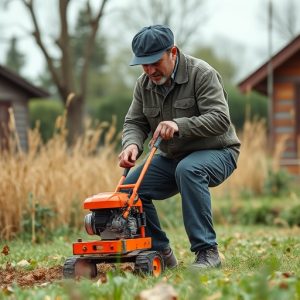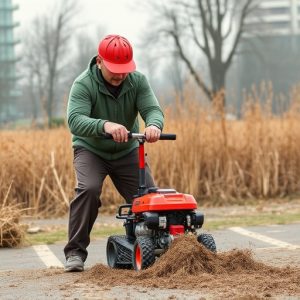Mastering the Kubotan Art: Self-Defense Strategies and Integration into Martial Arts
The Kubotan is a self-defense tool rooted in Eskrima martial arts, resembling a pen and extending t…….
The Kubotan is a self-defense tool rooted in Eskrima martial arts, resembling a pen and extending the power of hand strikes. Its effective use requires a comprehensive understanding of its historical significance, disarming techniques, precision drills, and diverse applications within Filipino martial arts, as detailed in how to use a kubotan guides. Modern practitioners, including those in Kenpo and Karate, employ the Kubotan as both an impact weapon and a control device, utilizing a variety of strikes, thrusts, and blocks. Achieving mastery with the Kubotan involves deep knowledge of body mechanics, spatial awareness, and understanding its reach, all while adhering to strict safety protocols. Training is intensive and requires the guidance of a qualified instructor, focusing on dedicated practice to safely and effectively use the tool in self-defense scenarios. Proficiency with the Kubotan significantly bolsters one's defensive capabilities by providing additional techniques that extend and amplify hand strikes, targeting sensitive areas to incapacitate an attacker. Regular and rigorous training is essential to integrate the Kubotan as a natural extension of the body, enhancing one's martial arts skills through both offensive maneuvers and control tactics.
Discover the empowering world of self-defense with the Kubotan fighting system, an innovative martial art that extends beyond conventional techniques. This article delves into mastering the Kubotan, its storied origins, and the nuanced strikes and control tactics it offers. Whether you’re a seasoned practitioner or new to martial arts, understanding how to use a kubotan effectively can significantly enhance your defensive skills and complement your training regimen. Join us as we explore the intricacies of integrating this versatile tool into your practice for heightened proficiency in self-defense scenarios.
Mastering the Kubotan: An Overview of its Origins and Techniques
The Kubotan is a self-defense tool that has gained prominence in martial arts, particularly within the Filipino martial art of Eskrima, where it originated. This compact, pen-like device serves as an extension of the hand and finger, enhancing the user’s striking capabilities. Mastering the Kubotan requires a blend of technical skill, understanding its origins, and practicing the various techniques associated with it. The history of the Kubotan is deeply rooted in the traditional martial arts of the Philippines, where it was first used to train fighters in disarming techniques and to practice precise striking under realistic conditions. Today, practitioners learn how to use a Kubotan as both an impact weapon and a control device against adversaries. The techniques involve a variety of strikes, thrusts, and blocks that leverage the Kubotan’s potential to deliver powerful blows or to neutralize threats through manipulation of pressure points. Proper execution of these maneuvers requires mastery over one’s own body mechanics, as well as an awareness of spatial orientation and an understanding of the Kubotan’s reach and capabilities. Practitioners must also adhere to safety protocols, ensuring they use the tool responsibly and only in self-defense situations. With dedicated practice and instruction under a qualified instructor, individuals can effectively integrate the Kubotan into their martial arts repertoire, enhancing their self-defense skills significantly.
The Mechanics of Self-Defense: Effective Kubotan Strikes and Control Tactics
When encountering a threatening situation, understanding the mechanics of self-defense with a Kubotan is crucial. The Kubotan is a short, thick stick that can be used as an extension of the hand and finger to deliver targeted strikes or as a control and restraint tool. To effectively use a Kubotan for self-defense, one must familiarize themselves with its unique applications. Strikes with the Kubotan are designed to incapacitate an attacker by targeting sensitive areas of the body, such as the eyes, nose, groin, and nerves. Practitioners learn to execute precise jabs, slashes, and circular motions that can cause pain and disorientation, providing a critical window for escape or further defense maneuvers.
Beyond strikes, control tactics with the Kubotan are equally vital in self-defense scenarios. These techniques involve using the tool to control an assailant’s limbs or to neutralize their threats. For instance, one can use the Kubotan to apply pressure on an opponent’s wrist or elbow joints, effectively disarming or stopping them from advancing. Additionally, the Kubotan can be used to leverage against walls or the ground to pin an attacker, restricting their movement and rendering them incapable of continuing an assault. Mastery of these tactics requires dedicated practice and a deep understanding of biomechanics and human anatomy. Knowledge of how to use a Kubotan extends beyond mere possession; it involves a commitment to learning and honing the skills necessary to employ this tool effectively in self-defense situations.
Integrating the Kubotan into Your Martial Arts Practice for Enhanced Skill and Application
The Kubotan is a versatile self-defense tool that has become an integral part of many martial arts practices, particularly within the disciplines of Kenpo and Karate. For practitioners looking to expand their skill set and enhance their self-defense applications, integrating the Kubotan into training can provide a multitude of benefits. The Kubotan’s design allows for a range of techniques that can be practiced to improve one’s proficiency in strikes, control holds, and joint locks. By incorporating the Kubotan into drills, martial artists can develop a keen understanding of leverage and the mechanics of force application. This integration not only adds a new dimension to striking but also teaches practitioners how to use a kubotan as an extension of their own limbs, thereby augmenting their defensive capabilities in a realistic self-defense scenario.
To effectively integrate the Kubotan into your martial arts practice, it is essential to approach training with patience and diligence. Start by learning the basic grips and stances that form the foundation of Kubotan techniques. Progress gradually to more complex maneuvers, ensuring a solid grasp of each step. Safety should be a primary concern when practicing with the Kubotan; therefore, begin with practice against padded targets before advancing to live drills under the guidance of an experienced instructor. As your skill with the Kubotan develops, you’ll find that it complements and enhances your empty-hand techniques, providing a well-rounded addition to your martial arts arsenal. Remember to practice regularly to refine your abilities and become adept at deploying the Kubotan in various situations. With consistent training and a focus on mastery, the Kubotan can significantly contribute to your overall martial arts practice.


